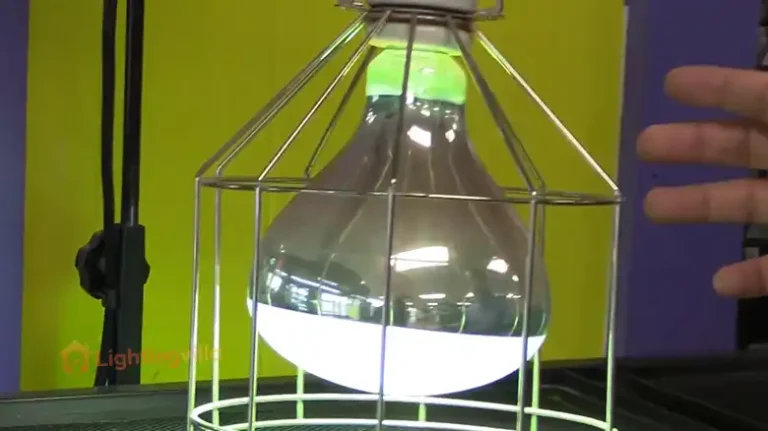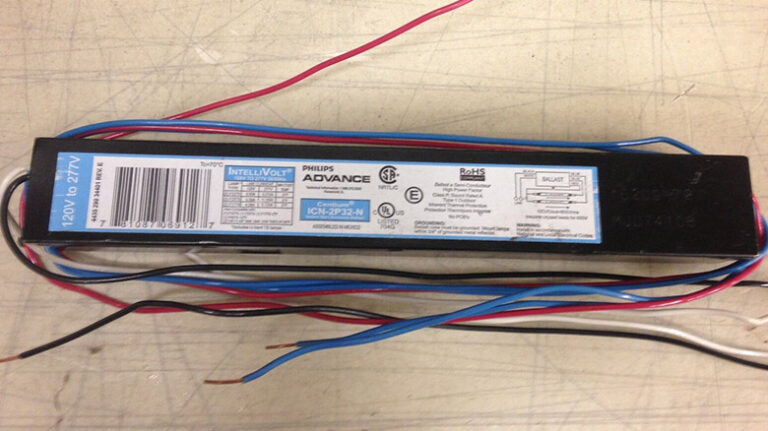How To Keep A Light Bulb From Vibrating Loose
How are light bulbs removed from their sockets? You can’t be the only one experiencing this. We don’t believe that the need to sometimes adjust the bulbs is because lamps are often quite old and wobbly.
The bulb may occasionally go out because it hasn’t been twisted all the way. Recently, someone changed a burned-out bulb that was just one screw shy from loosening itself and tumbling to the floor, according to complaints we received. Your lightbulbs seem to be acting suicidally, but do you believe there could be a more rational explanation?
Let’s get some answers to all those questions.

How Does a Lightbulb Become Loose
What is the best way to take light bulbs out of their sockets? There must be others who are going through this as well. We don’t think the fact that lights are frequently rather old and shaky is the reason why you occasionally need to change the bulbs.
Since it hasn’t been completely twisted in, the light may periodically go out. According to concerns we got, a burned-out bulb was recently replaced although it was only one screw away from losing and falling to the floor. Do you think there may be a more logical reason for why your lightbulbs appear to be behaving suicidally?
Though it requires more power than just screwing or unscrewing, it is possible to move it a tiny bit by slightly contorting the socket and base. The bulb can, however, swivel in the coming loose direction. Up until it comes out, there is nothing that can stop it. The unpredictable forces will tend to move the lightbulb more in one way than the other if they are not completely balanced.
If they often unscrew it, ultimately, they will loosen it to the point where the electrical contact breaks and the bulb will stop working. That will be apparent, and you’ll find the loosened lightbulb. The bulb will just remain securely in the socket if random factors tend to push it in, and you will disregard it.
What then are these enigmatic random forces that cause the bulb to move?
Thermal Cycling
There are two options in our minds. Thermal cycling is the initial one. The components of the lightbulb base and sockets heat up when the light is turned on, which causes them to expand. But not every component heats up equally quickly. The components also come in a variety of materials with various expansion properties. As a result, there is some misalignment in the size changes, which leads to internal pressures that push on the bulb and cause it to become looser or tighter.
With older socketed computer processors, such as the CPU and RAM, it used to occur. They would enlarge and shrink over hundreds of on/off cycles before gently walking out of the connection until the computer crashed. We can recall certain older computers were pulling all the cards and forcefully pressing down on each chip was the first step in troubleshooting.
The issue was frequently resolved. For this reason, CPU modules and memory cards typically feature a retainer that snaps into place. Most current computers employ intricate sockets that are meant to prevent components from coming free.
When a bulb unscrews itself in this manner, it goes out, thermal cycling halts, and thermal cycling cannot turn the lightbulb back on. However, as a bulb cannot be unscrewed past the point where it ceases to function, this does not explain how Libby discovered a bulb that had almost fallen out. There must be other factors at play.
Random Vibrations
All we can imagine are haphazard vibrations caused by things like people moving about, passing cars, and moving air currents. Once more, if such vibrations are just not perfectly balanced—which they never are—they will tend to move the lightbulb more of it in one way than in the other. They will prod the lightbulb away from electrical connections and finally out of the socket if they are pressing in the unscrewing orientation.
That is the only explanation We can come up with for the self-unscrewing bulb occurrence.
Unless you own cats. They frequently engage in behavior like this because they believe you won’t ever catch them.
How to Prevent Lightbulb Looseness
You might round the base with a brief, thin strip of aluminum foil. This foil plate may serve as an unlevel foundation for your lightbulb, holding it in place more securely than the fixture. To be safe, nevertheless, keep the foil from rising past the socket’s base. You risk being electrocuted if you do it.
Another approach would be to use a piece of electrical tape to firmly anchor the bulb and socket base. This makes it easier for you to grasp the bulb and prevents it from falling off due to vibration or any other action. Nevertheless, the heat from the bulb might cause the tape to melt.
Do you usually use this door to resolve “domestic disputes”? If so, then you might try shutting it with less pressure.
NOTHING should be wrapped around the bulb’s threads. It may serve as an insulator and prevent the bulb from lighting, but starting a fire is a greater concern.
Reasons for Lights Buzzing
Lights can buzz for many reasons but the most common reasons are:
Loose Bulb
The obvious initial action when dealing with flickering bulbs is to retighten the lightbulb. Even the greatest light bulbs might progressively loosen or give way over time, especially those close to vibration-prone regions. Because of foot movement on the floor above, ceiling lights on the first floor might rattle.
In many cases, the heated tab inside the bottom of the sockets has given way slightly and is not entirely coming into contact, this leads the light to flicker as opposed to the bulb unscrewing.
Loose Outlet
The bulb may flicker when used with floor or table lights powered by those outlets. Even if the bulb may be in fine shape, the power supply fluctuates. Typically, a worn-out outlet’s internal conductive metal blades or a loose connection in which the wire attaches to the outlet are to blame.
Faulty Wiring
The power supply panel (circuit breakers), as well as the light switch, are connected by cables, so anything could go wrong along the route. In most cases, cables that are within walls are not at fault. These electric wires usually remain in place as long they have been stipulated in or run through stud holes.
Interconnections, like junction boxes, in which individual lines inside the wire sheath branch out and are connected to other objects, are typically the focal focus of the issue.
How to Stop a Buzzing Light Bulb
Use these troubleshooting tips to stop a bulb from buzzing:
- Switch the bulb with a new one: If a broken lightbulb is the likely cause of buzzing, changing it out might be an easy fix.
- Replace conventional incandescent bulbs with robust service lights, LEDs, or CFLs: These have stronger, wider filament or, in the instance of LEDs, no filament at all, making them less likely to wobble and hum. Lower power expenses are another advantage of low-wattage CFLs and LEDs.
- Use the right type of bulb: All bulbs are not compatible with dimmers. If you want this functionality, choose a light with a dimmer.
- Take one or two lights out of a fixture with several lights: If the buzz stops, the dimmer is probably unable to control the amount of energy needed to power all of the lights at once. To get around this, switch out the lights with lesser-watt CFLs or LEDs.
- Change the magnetic ballast or dimmer: Buzzing is usually brought on by fragile electromagnetic ballasts and dimmer switches. You might need to purchase a good alternative to stop the bulbs from making this annoying noise.
Frequently Asked Questions
Can You Cover The Light Bulb With Aluminum Foil?
The foil will become inflammable if exposed to heat or direct flame. Fires may start due to heat. It may also start a fire. Heat may move swiftly through the foil.
Can A Fire Start From A Faulty Light Bulb?
It can, indeed! Any type of light bulb, whether fluorescent, incandescent, or halogen, has the potential to start a fire if not utilized properly.
Conclusion
A loose light bulb is more common than you think it is, but the good news is in most cases the bulb doesn’t just fall off. They just become disconnected from the electric socket. So this gives you chance to re-screw it rather than buy a new one.



![[Explained] Can UV Light Cause A Fire?](https://lightingvilla.com/wp-content/uploads/2023/01/Can-Uv-Light-Cause-A-Fire-768x431.jpg)


